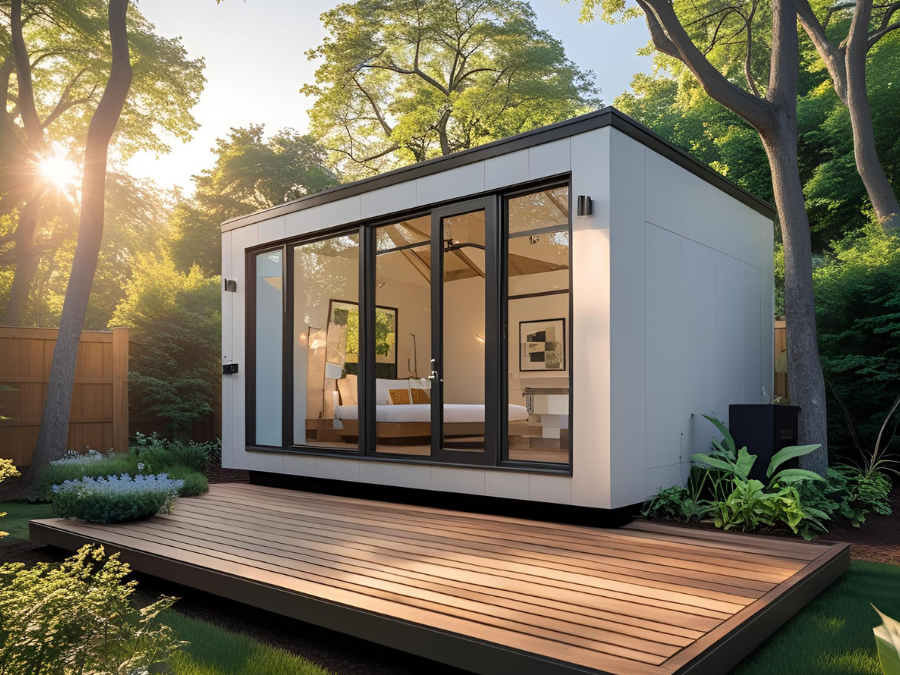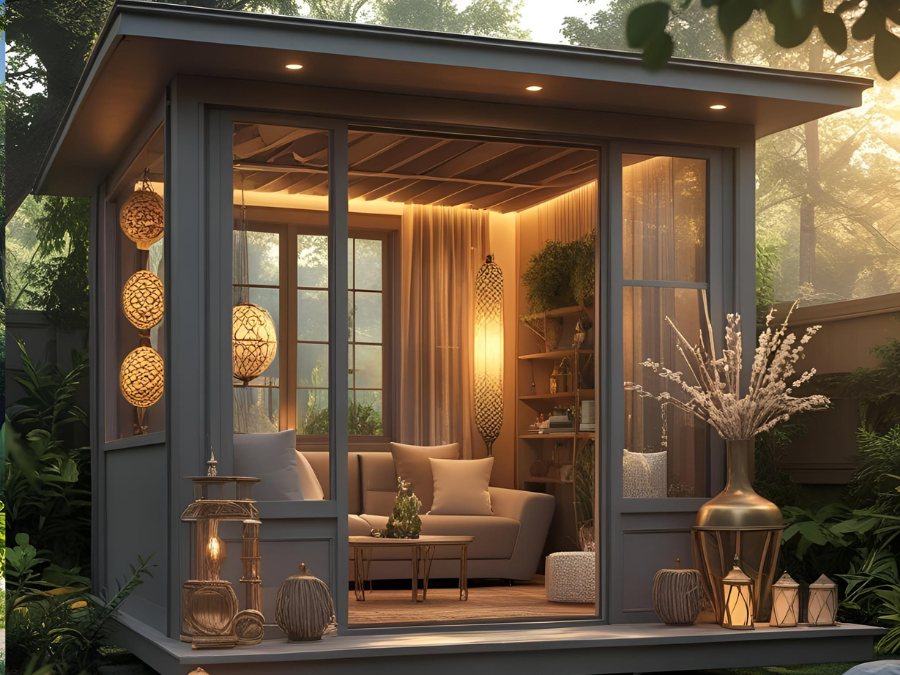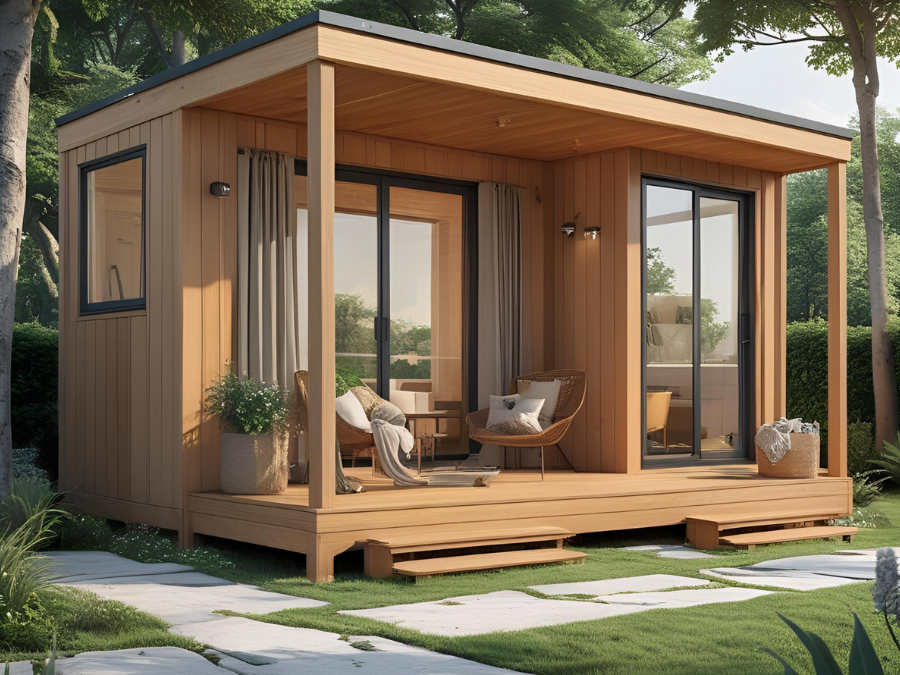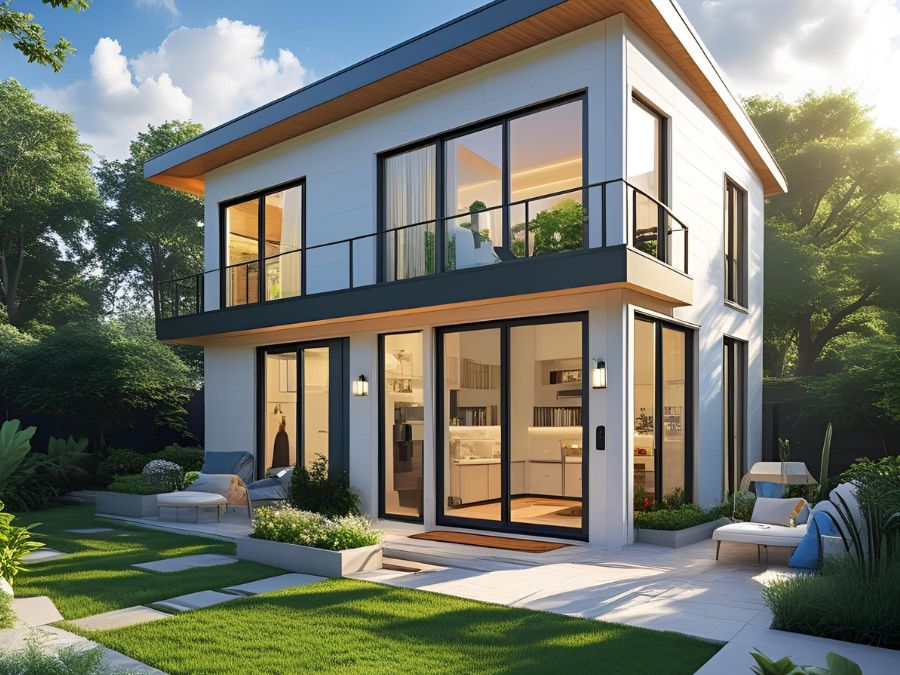How to Finance Your ADU Project
Adding an accessory dwelling unit (ADU) to your property can be a rewarding investment by providing additional living space for your family, generating rental income and increasing your property value. However, despite the benefits, financing an ADU project can be a challenging task, given the various options available and the complexity of the process.
We all wish money grew on trees, especially in the face of costly projects like building a brand new ADU. While some people have the cash on hand to fund a project of that expense, most people do not and will need an ADU loan.
It’s important to find a way to finance your ADU that aligns with your specific situation, both economic and otherwise.
Whether you’re considering an ADU to accommodate aging parents, provide rental income, or simply add value to your property, financing your ADU project is critical. With careful planning and strategic financing you can transform your vision into reality.
Average ADU Construction Costs: A Breakdown
The cost of constructing an ADU can vary significantly depending on several factors, including:
- Size: Larger ADUs will naturally cost more than smaller ones
- Location: Building costs tend to be higher in urban areas compared to rural areas
- Amenities: Adding features like high-end finishes or smart technology will increase the overall cost
- Labor costs: Labor rates vary by region and can fluctuate based on demand
- Permits and fees: Local permits and inspection fees can add to the overall cost and vary by region
Despite the variables, here’s a general range of ADU construction costs:
- Small ADU (200-400 sq.ft): $30,000-$100,000
- Medium ADU (400-600 sq ft): $80,000-$150,000
- Large ADU (600+ sq ft ): $120,000-$200,000
These estimates represent the total cost of construction, including materials, labor and
fees. It’s important to note that these are just averages, and the actual cost of your ADU project may be higher or lower depending on your specific requirements.

Understanding Your Options
The financing landscape for ADUs is diverse, offering a range of options to suit different financial situations and project requirements.
Each option has advantages, limitations and fees which we will explore.
Home Equity Investment
A newer option is a Home Equity Investment (HEI) loan which allows homeowners to access up to 25% of their home’s equity in exchange for a share of their property’s future appreciation or increased property value.
Companies like Point, Hometap, Unlock, Splitero and Unison offer this type of investment, requiring no debt to be taken on by the homeowner.
Pros:
- Debt-Free-Financing: Unlike traditional loans, HEIs do not require you to take on debt, so you are saving money.
- No monthly payments: No additional payments are involved, easing homeowners financial burden which provides huge financial benefits.
- Broad Eligibility: Approval is not based on household income, debt-to-income ratios, or credit scores but on the potential future value of the home.
- Availability of Funds: The swift approval process quickly makes funds available for your project.
Cons:
- Non Negotiable Appraisal: The investor’s appraisal of the property value is final and cannot be negotiated.
- Time Bound Buyout: The investor must be paid off within a set timeframe (usually between 10 to 30 years) either through a refinance, a buyout, or selling the home.
Summary
Home Equity Investments (HEIs) are an innovative and debt-free way to finance an ADU. They offer quick access to cash without monthly payments and are open to a broader range of homeowners based on the future home’s equity rather than traditional credit metrics.

Cash-Out Refinance
A cash-out refinance is a type of mortgage that refinances your primary mortgage and uses your existing home equity to access cash to pay for construction. Essentially, you get additional
cash while taking a larger mortgage. Cash-out refinance typically allows you to borrow up to 80% of your home’s current value. You pay the loan back over 15 to 30 years, just like a standard mortgage.
Pros:
- Widely available
- All money is available upfront thanks to lump sum payment.
- Simplifies repayment by consolidating mortgage and ADU financing into a single loan
- Flexible use of funds; you pay the contractor as key milestones are completed.
- Interest rates are often lower than other borrowing options (e.g. construction loans, credit cards, etc.).
Cons:
- Borrowing power is limited as most cash-out refinances only let you borrow up to 80% of your current property value.
- DTI (Debt-to-Income) ratio must be low to qualify.
- Home equity must be high and recent home buyers rarely have enough equity built up to fully fund (ADU) construction.
- Must retire your current mortgage which might have a lower interest rate than the new primary mortgage.
Summary
A cash-out-refinance is an ideal choice for homeowners who have high amounts of home equity and prefer the convenience of a consolidated monthly payment. However, if your equity is too low or your DTI too high it might not be an option.
Home Equity Line Of Credit (HELOC)
If you have equity in your home, you can use that as collateral to borrow money against it and finance the construction of your ADU. A home equity line of credit, or HELOC, lets homeowners access up to 85% of their total equity in their home and borrow against it on an as-needed basis. Interest only accrues on the outstanding balance, not the entire borrowing limit, with interest-only payments due monthly over the draw period of the loan. This can be a good option for homeowners who plan to pay for the ADU project over time.
Pros:
- Flexible financing: A HELOC can enable homeowners to borrow in increments, allowing you to take out only what you need for each stage of ADU construction.
- Save on interest: No need to pay interest on extra money because you borrow based on what you need.
- Flexible use of funds and borrowing power is typically slightly higher than a cash-out refinance.
Cons:
- Variable Interest Rate: The interest rate on a Heloc is often variable which can increase the cost of borrowing if rates go up.
- Equity Requirement: Like cash-out refinancing, you will need a substantial amount of equity, typically between 10% to 20%, for qualification. Most lenders will allow you to borrow up to 80% to 85% of your home’s value minus your first mortgage. For homeowners without equity, this is not an option.
Summary
A Home equity Line Of Credit (HELOC) allows most borrowers to tap into the home’s equity, perfect for projects like ADU construction. It has lower closing costs and you only pay interest on the money you use. The amount of current equity limits the homeowner’s borrowing power.

Home Equity Loan
A home equity loan is a type of second mortgage that you can carry alongside your existing mortgage. Like a cash-out refi, it uses your existing home equity to access cash for construction. You can typically borrow up to 80% of your home’s current value. Once the loan closes, your lender will pay you the total loan amount. You pay the loan back in consistent monthly payments (both principal and interest) over 10-30 years.
Pros:
- Flexible use of funds
- Can keep current mortgage
- Fixed interest for life of loan
Cons:
- Interest rates for a second mortgage are higher than those for a first mortgage.
- Not enough funds if you lack home equity
Summary
Home equity loans are a great option for borrowers with good credit and high home equity. Crucially, you don’t have to retire your existing mortgage in order to get a home equity loan, a major plus if you’ve previously locked in a low rate on your mortgage.
Renovation Loan
A renovation loan is a type of mortgage that provides funding for home renovation as well as for the purchase or refinance of the home itself. If you already own your home, it replaces your existing mortgage and provides you with the cash needed for the ADU project. You’re charged a relatively low fixed-interest rate and you pay the loan back over 30 years, just like a standard mortgage.
Two commonly used renovation loans are the Fannie Mae HomeStyle and the FHA 203k loan.
Unlike other types of loans, renovation loans allow you to borrow 95% of your home’s value post renovation (essentially what the home will be worth with an ADU). If you don’t have much
home equity, this can help you access enough funds to finance your ADU construction. This can also be a good option for homeowners who don’t have high credit scores.
Pros:
- Based on home’s future value with an ADU
- Higher Borrowing Limits: You can borrow up to 95% of your post-renovation property value which offers more substantial funding than traditional home equity loans.
- Available to lower income borrowers
Cons:
- Relatively few lenders offer these loan products; you’ll have to shop around and contact multiple lenders.
- They’re often slow to close; expect the process to take at least 90 days. Delays are common, especially when a lender lacks experience with renovations loans.
- Before the loan is approved, a third-party consultant will have to approve your construction budget and the lender will want to see that the city has approved your building permit. This can slow down the closing process.
- The lender is unlikely to change the project budget after it’s locked in. You may have to pay out of pocket for cost overruns.
Summary
The renovation loan is a flexible way for borrowers to finance ADU construction with a
single first mortgage or refinance. It also prevents borrowers from having to take out a second mortgage, HELOC, or other costly financing methods.

Construction Loan
A construction loan is a short-term loan (typically 1-2 years) that can provide financing for an ADU. Like a renovation loan, a construction loan is based on an estimate of what the home’s value will be after the ADU is completed. This allows you to borrow up to 80%-85% of the home’s value post construction.
There are two main types of construction loans:
- Construction-to-permanent loan: this loan provides funds for ADU construction and when the project is complete, the loan converts to a standard 15-30 year loan
- Construction-only loan: this loan also provides funds for ADU construction. At the end of the term (1-2 years) the borrower must either pay the loan back in full or get a mortgage or home equity loan to provide permanent financing.
Pros:
- Interest only payments during draw period
- Construction-to-permanent loans issued by credit unions often have low interest rates and can offer fixed rates, allowing you to lock in low rates over the long term.
Cons:
- Interest rates vary widely and construction-only loans tend to have high interest rates.
- Relatively few lenders offer construction loans; you’ll have to shop around.
- Before a lender will issue a construction loan, you’ll need a home appraisal confirming that an ADU will add significant value to your property. ADU appraisals are sometimes inconsistent and have historically undervalued ADUs (particularly those that convert existing living space).
- Similar to HELOCs, construction loans have variable interest rates. This means your monthly payment could fluctuate.
Summary
While a construction loan may help homeowners who have less equity in their property to borrow the money they need to develop an ADU, they will need to refinance and this can mean losing a great fixed rate (if this was locked in when these were at a rock bottom low). Construction loans are a one-size-fits-all solution and are not based on your specific needs and requirements.
Local ADU Programs
Local governments often have financial assistance initiatives, including grants, forgivable loans, local ADU funding and traditional loans designed specifically for ADU construction (try searching “your city ADU grants”).
They usually have certain requirements that homeowners need to meet to apply, such as income limits and property location.
Pros:
- Localized assistance: Programs are tailored to local needs and conditions.
- Variety of options: Grants, loans, and other financial aids are available providing multiple avenues for assistance.
Cons:
- Limited Scope: Many of these programs are in their pilot stages accepting only a limited number of applicants yearly.
- Insufficient Funding: The funds provided may not cover the entire cost of constructing the ADU projects or items such as permitting costs.
Summary
Local ADU programs offer an additional layer of financial aid possibilities. They can supplement other funding methods, although they often have restrictions and limitations.

Challenges in ADU Financing
Securing financing for an ADU project comes with its set of challenges. Homeowners may face difficulties meeting the stringent eligibility criteria for loans or navigating the competitive nature of grant application. Understanding the terms and conditions of any financing agreement is crucial as it affects not only the immediate project costs but also long term financial commitments such as interest rates, repayment, and potential impacts or property taxes.
How should you decide? Since there’s no one-size-fits-all solution to ADU financing, you’ll have to evaluate your available funds, established home equity and credit score, and weigh that against your project budget to decide which option is the right fit for you. That might seem like a daunting task but you might not have to do it alone. Many ADU home builders have navigated these waters before and can help you determine the ideal financing choices for your specific needs.

